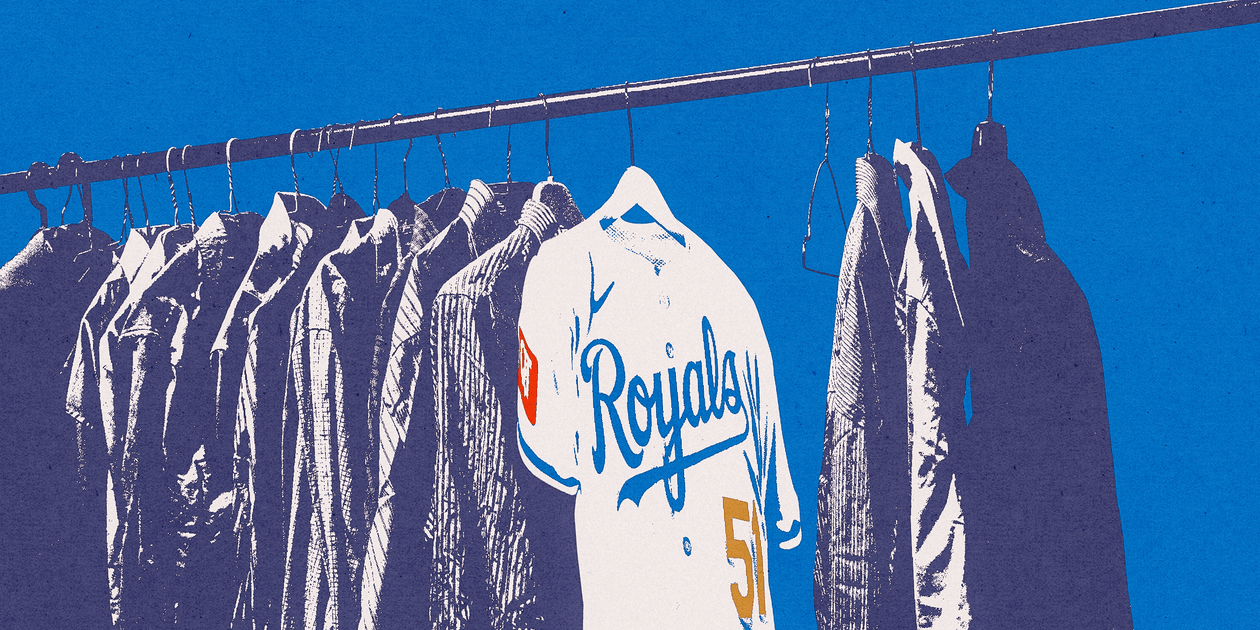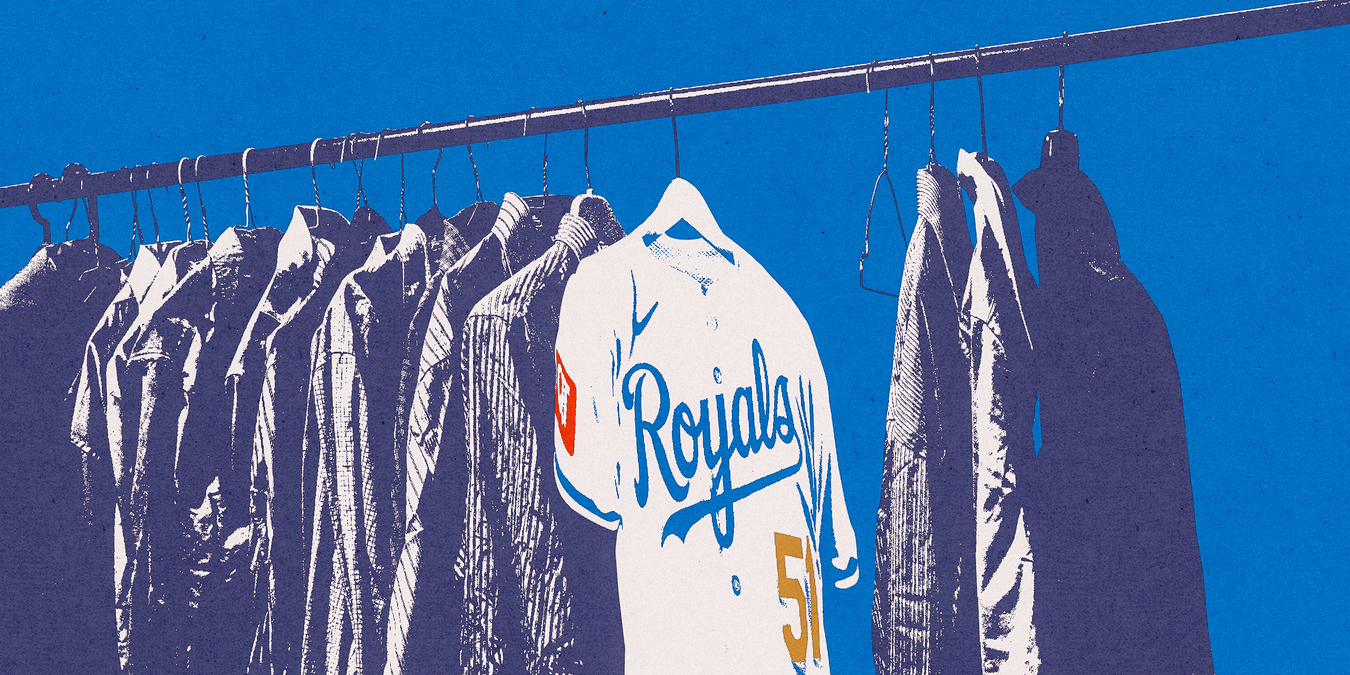
Every winter, Jeimer Candelario drives around the Dominican Republic — a place he’s called home since he was 5 — finds some baseball fields and pops a trunk brimming with swag.
Candelario, a 31-year-old infielder, is currently with the Cincinnati Reds, his fifth career organization and fourth in the past four years. Like every other big leaguer, Candelario accumulates a surplus of clothing and equipment at every stop. So when he spots a group of kids playing, he sees it as an opportunity to pay things forward.
Advertisement
“These kids need it a lot more than I do,” Candelario said.
It goes well beyond the on-field uniform. There are team-issued alternate hats and warmer winter hats, long-sleeved dry-fit shirts and endless T-shirts and hoodies. There are shorts and sweats, spring training gear and playoff gear, and every year the looks change — and that’s just the start.
Companies who want to advertise their (typically unlicensed) wares often send free packages to players. Team mantras and inside jokes have a way of finding themselves onto clothing, too. And then there are the team’s fan giveaways, which often include beanies, bucket hats or popular player tees. Big leaguers also have equipment deals for cleats, gloves, batting gloves and, of course, more clothing.
“We overconsume for sure,” said Guardians outfielder Steven Kwan, who said he wears only four pairs of cleats per season when some players swap out shoes as often as every series. “It’s a lot,” he said. “It’s too much.”
Kwan said he ends up giving away the bulk of what he gets each year, and has been in only one organization for his entire career after being drafted by Cleveland in 2018. What do guys who switch teams do with all their old stuff?
In November, Royals pitcher Brady Singer’s clothing was spotted in a Kansas City Goodwill hours before news broke he had been traded to the Reds (Singer later said he had donated his items at the end of the season and the timing was a coincidence). Singer’s teammate Emilio Pagán, in his sixth organization, found a high school kid down the street to donate to. Santiago Espinal saves his stuff for his dad, who disperses it among coworkers’ families. During the dozen years he spent with the Dodgers, Angels pitcher Kenley Jansen would send all his shirts to Manny Mota, who gave them out at his Dominican baseball league and nonprofit, with cleats and gloves often included.
Advertisement
It can be tough to reuse or recycle anything at the next stop, but sometimes you get lucky.
“See this?” asked Red Sox reliever Liam Hendriks while proudly pointing to a red T-shirt in his locker. “This is from the White Sox.”
Hendriks, who has equipment bags in his garage stuffed with things from more than a half-dozen organizations, wore the shirt underneath his uniform on home Sundays when the South Siders wore red throwback jerseys up until last year. He pulled the shirt out of storage because he likes the fit and it’s logo-less — no player wants to show up to a new team with another organization’s logo or colors on display.
“I was with the Rangers last,” said Chicago White Sox outfielder Travis Jankowski, who has played for seven different organizations. “I’m not going to be wearing blue (the Chicago Cubs’ color) cleats here.”
“You might find some Hedgie catching gear at your local Goodwill,” said Guardians backstop Austin Hedges, who has played for four organizations since debuting in 2015. “I’ve done it all: given to charity, people I know, just dropping it off at a local high school. I’ve had a different number every place I’ve gone, so I have to get new stuff.”
Even if the back of the uniform stays the same, the details rarely do. Mariners reliever Drew Pomeranz has been on 10 different teams, including two organizations twice. When he was with San Diego in 2016, navy blue was one of their primary colors. By 2020, the Padres had gone back to brown and yellow.
“I probably kept a lot more of it than I should,” Pomeranz said. “My kids might like it at some point. All the trends come back around right? I may be wearing that stuff in 15 years, some of the sweatshirts.”
Reds pitcher Wade Miley, who is in his 15th big-league season, has closets so full you “couldn’t get another hanger in there,” according to the 38-year-old, who maintains he’s also given away plenty.
Advertisement
“What number (team) am I on? Seven, eight, nine? I lost count,” said Miley, who has been in eight organizations and is in his second stint with Cincinnati. Miley has taken a leaner approach the past few years, only grabbing one jersey and leaving the rest in his locker for the clubhouse workers to donate or disperse. The less he has, the less he has to worry about.
“I played with a guy that every time we would get something in our locker, he had a partnership with someone selling game-used stuff and they’d split the cost,” Pomeranz said. “He had a very clean locker. That’s the best way to do it because you end up keeping stuff you are never going to do anything with.”
During spring training, Jankowski gestured to the cardboard box with “Minors” scrawled in marker in the middle of Chicago’s clubhouse. Clubhouse attendants often collect donations as guys get cut, opt out or simply decide to streamline their wardrobe before the regular season.
One item players almost universally agree on keeping is their jersey top. Pagán, inspired by Mariners outfielder Luke Raley’s custom setup, made lockers for each of his teams in his office. Miley has his hanging on a basement wall. Pomeranz has a trophy room with some of his World Series and playoff memorabilia on display, though he estimates it has “less than a quarter” of the stuff he’s kept over the years. Jansen is saving his jerseys to display in his post-playing days, as is Royals pitcher Seth Lugo.
Acquiring your own jersey is nuanced. Some teams, like the Boston Red Sox, don’t really care what or how much players take from their lockers at the end of the season. Others, like the Miami Marlins, let players take one jersey and charge them for more. Some claim to charge players but never do. Multiple players The Athletic spoke to said if you’re in good standing with the clubhouse attendants — who are tipped out at the end of the season — the rules are flexible.
“It’s like most things in life,” Hendriks said. “Don’t be a d— and you’ll be fine.”
Guys who are on the same team for multiple years will sometimes pad their collections for charity auctions or to ensure they have all of the team’s alternate looks covered. It’s a slippery slope though for veterans who need to downsize. Miley estimates he has upwards of 60 pairs of cleats at home. He and Hendriks openly wondered why their wives haven’t thrown away a lot of their stuff.
Advertisement
“My sh— is just everywhere,” Miley said.
Added Pomeranz: “It’s hard to throw away. I probably should have done it initially or I wouldn’t have this problem now.”
Hendriks said he’s keeping it all just in case, and the decision paid off when he re-used the shirt from Chicago in Boston. And one day when he’s retired and coming back to camps, he’ll pull out an equipment bag and rewear it. He scours eBay already for older clothing; he thinks the quality was better before Fanatics took over the league’s merchandise.
“I’d much prefer to have it and not need it than to need it and not have it,” Hendriks said.
Lugo feels the same. The 35-year-old in his 10th big-league season has almost everything he’s ever been given. The Mets’ giveaway bobbleheads, T-shirts, you name it and it’s probably up in Lugo’s attic. All the swag was in a room in the house until it piled up too high and had to moved into bins and old equipment bags.
Lugo says he’s not a hoarder, he gave a few items to Topps last year in exchange for memorabilia. He plans to fill another room someday, not just full of stuff, but full of memories. “It’s the big leagues,” Lugo said. “It’s all cool, and I want to keep it.”
(Dan Goldfarb / The Athletic; photos: Christian Petersen / Getty Images, iStock)

